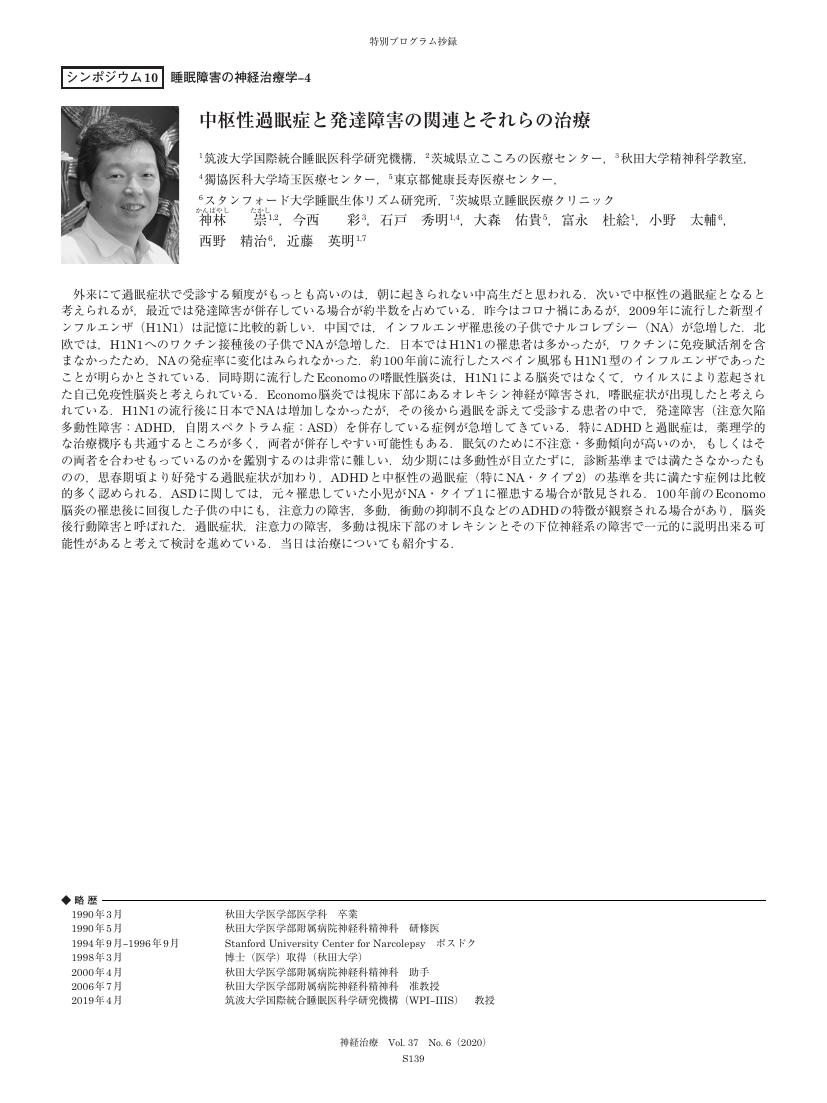- 著者
- 神林 崇 今西 彩 富永 杜絵 石戸 秀明 入鹿山 容子 韓 庫銀 木村 昌由美 近藤 英明
- 出版者
- 日本神経治療学会
- 雑誌
- 神経治療学 (ISSN:09168443)
- 巻号頁・発行日
- vol.38, no.4, pp.503-507, 2021 (Released:2022-04-28)
- 参考文献数
- 7
Even though we are currently in the midst of pandemic from coronavirus infection, the new influenza (H1N1) epidemic in 2009–2010 was unforgettable. Concurrently with the H1N1, narcolepsy surged in post–affected children in China. In Northern Europe, narcolepsy surged in children after H1N1 vaccination. Although there were many cases of H1N1 in Japan, there was no change in the incidence of narcolepsy because anti–influenza drugs prevented the disease from becoming more severe and the vaccine did not contain an adjuvant. It has recently become clear that the Spanish flu that prevailed about 100 years ago was also H1N1. Economo's encephalitis lethargica, which was prevalent at the same time, is thought to be autoimmune encephalitis rather than H1N1–induced influenza encephalitis. It has been reported that Economo's encephalitis caused damage to the hypothalamus, including the orexin system, resulting in lethargic symptoms.Since the 2010s, the number of patients with neurodevelopmental disorders (ADHD, ASD) has been increasing among the patients who complain of hypersomnolence. Consideration of the course of symptoms revealed that the patient was originally below the threshold of the diagnostic criteria for neurodevelopmental disease, that hypersomnolence occurred from around adolescence, and that the case also met the criteria for neurodevelopmental disease. Although hypersomnolence was not noticeable in early childhood and inattention was the main symptom, the diagnostic criteria were not met. Hypersomnolence, on the other hand, increased from around adolescence, was added, and attention deficit was exacerbated. Therefore, it is considered that there are many cases that satisfy both the diagnosis of ADHD and central hypersomnia. ADHD characteristics such as attention deficit, hyperactivity, and poor impulsivity may be observed in children who have recovered from Economo's encephalitis and are called post–encephalitis behavioral disorders. The pathophysiology of Economo's encephalitis is presumed to be a disorder of the hypothalamus, including the orexin system, but it is possible that the disorder remained even after recovery.We believe that impaired attention, and restlessness caused by the hypersomnolence in neurodevelopmental disorders can be explained by dysfunctions of the orexin system and its arousal system. H1N1 morbidity may trigger neurodevelopmental disorders accompanied by hypersomnolence.
